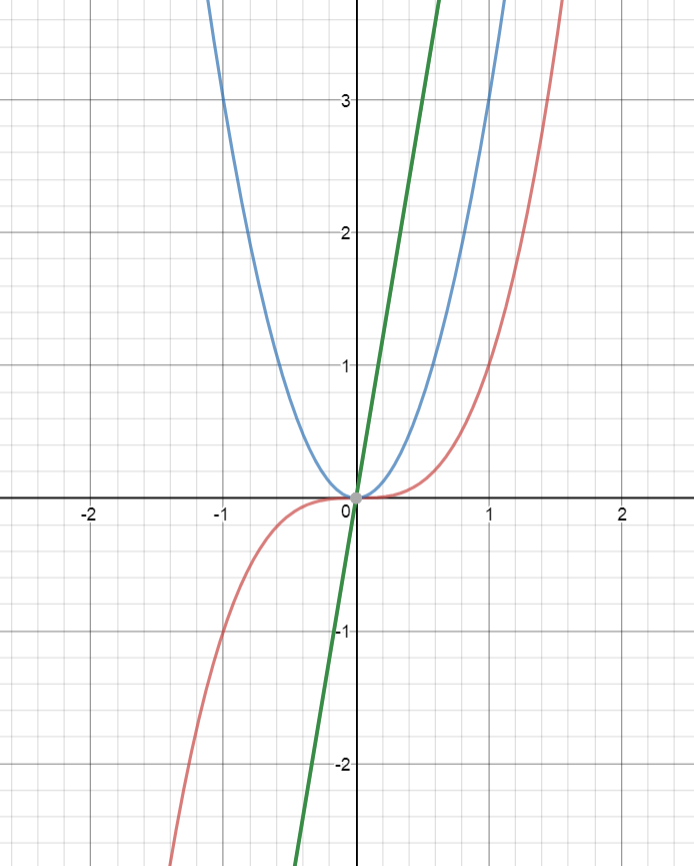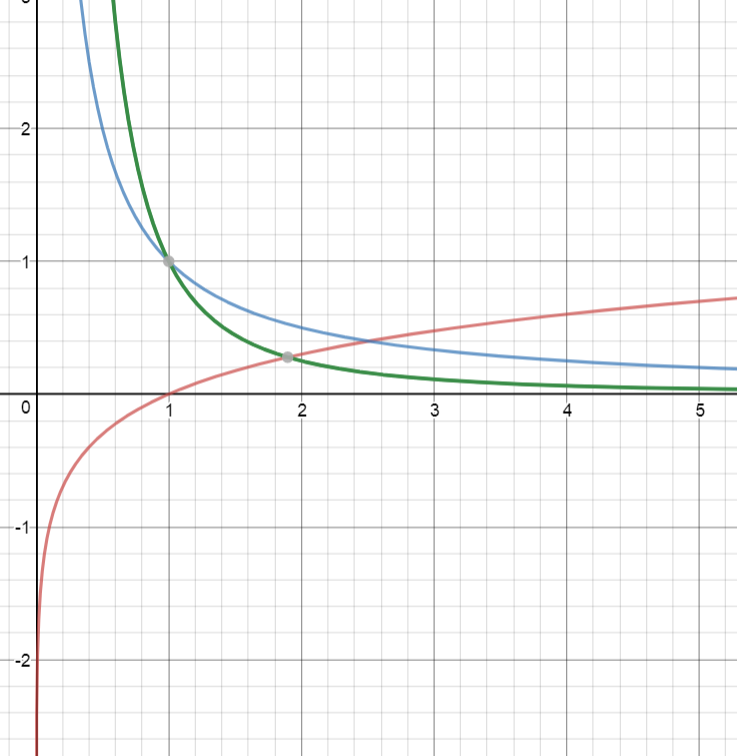Calculus
Chapters
Second Derivatives of Functions
Second Derivatives of Functions
If the second word of the title of this article doesn't make any sense to you, it would be a good idea to read the articles on derivatives first, and then come back to this one.
The derivative of a function gives you the slope of the function at any point where it is defined. It measures the rate of change of the function - how fast it is increasing or decreasing at that point.
The second derivative of a function is found by differentiating its derivative. How's that for a tongue-twister? So it's a derivative too,
and it measures the rate of change of the derivative. To find the second derivative of the function \(f(x)\):
- Find the derivative \(f'(x)\) of \(f(x)\)
- Take the derivative of \(f'(x)\)
Example
Find the second derivative of \(f(x) = x^5 + x^2\).
The rules of differentiation tell us that the derivative of \(x^5\) is \(5x^4\), and the derivative of \(x^2\) is \(2x\). So, the derivative of \(f\) is \(f'(x) = 5x^4 + 6x\).
The derivative of \(x^4\) is \(4x^3\), and the derivative of \(x\) is \(1\), so the second derivative of \(f(x)\) is:
- \(y = x^5 + x^2\)
- \(\dfrac{dy}{dx} = 5x^4 + 2x\)
- \(\dfrac{d^2y}{dx^2} = 20x^3 + 2\)
Applications of Calculus to the Physical World
This sounds like the chapter of a maths textbook. What we really want to talk about is distance, speed and acceleration. These are common real-world applications of first and second derivatives.
Example: Gus the snail
Gus the snail is in training to beat the world land-speed record. It will be hard work, but Gus is determined!
Gus tears along a garden path at the impressive speed of \(3 \text{ nanometres}\) every minute:

Distance: Gus needs to know how far he has moved along his garden path. Physicists often use the letter \(s\) to denote distance.
To measure the distance Gus has travelled, we'll use the following units and notation:
- distance (in nanometres): \(s\)
- time (in minutes): \(t\)
Speed: It is very important for Gus to work out how much his distance \(s\) changes over time. This is represented by the first derivative of \(s\) with respect to time: \(\dfrac{ds}{dt}\).
Gus's initial speed is \(3 \text{ nanometres per minute}\), so \(\dfrac{ds}{dt} = 3 \text{ nm/min}\)
Acceleration: If Gus wants that land-speed record, he'd better start moving more quickly! He increases his speed to \(4 \text{ nanometres per minute}\)
over the next two minutes:

Acceleration is the change in speed over time. It's the rate of change of the derivative \(\dfrac{ds}{dt}\), so it is represented by
the second derivative \(\dfrac{d^2s}{dt^2}\).
Gus's speed increases by \(1 \text{ nm/min}\) over 2 minutes, so his acceleration is \(\dfrac{d^2s}{dt^2} = \dfrac{1}{2} = 0.5 \text{ nm/min}^2\).
Note: Gus's speed changes by \(0.5\) nanometres per minute per minute. This is more usually written as \( \text{ nm/min}^2\).
More generally,
| Quantity | Expression | Value from the Example |
| Distance | \(s\) | \(3 \text{ nm}\) |
| Speed | \(\dfrac{ds}{dt}\) | \( 3 \text{ nm/min}\) |
| Acceleration | \(\dfrac{d^2s}{dt^2}\) | \( 0.5 \text{ nm/min}^2\) |
Note: The third derivative tells us how acceleration changes with time, and is found by differentiating the second derivative. It is sometimes called "jerk" or "jolt".
Some examples of graphs and their first and second derivatives
Let's finish with some examples of graphs of functions \(f(x)\), and their first \(f'(x)\) and second \(f''(x)\) derivatives.
Example 1
The picture below shows the graphs of \(f(x) = x^3\) in red, its first derivative \(f'(x) = 3x^2\) in blue and its second derivative \(f''(x) = 6x\) in green.

Example 2
The picture below shows the graphs of \(f(x) = \log(x)\) on the domain \((0,\infty)\) in red, its first derivative \(f'(x) = \dfrac{1}{x}\) in blue and its second derivative \(f''(x) = \dfrac{1}{x^2}\) in green.

Description
Calculus is the branch of mathematics that deals with the finding and properties of derivatives and integrals of functions, by methods originally based on the summation of infinitesimal differences. The two main types are differential calculus and integral calculus.
Environment
It is considered a good practice to take notes and revise what you learnt and practice it.
Audience
Grade 9+ Students
Learning Objectives
Familiarize yourself with Calculus topics such as Limits, Functions, Differentiability etc
Author: Subject Coach
Added on: 23rd Nov 2017
You must be logged in as Student to ask a Question.
None just yet!